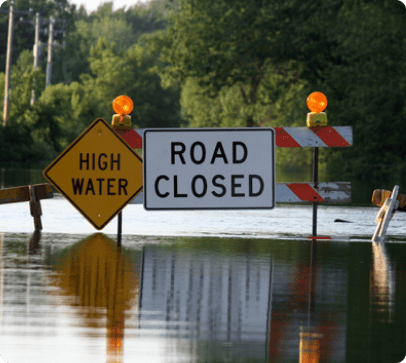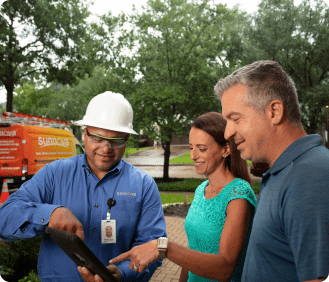

We can all make a difference, one distributed system at a time
The first true global energy crisis is unfolding. While the U.S. has seen oil crises in decades past, this is different. What we’re experiencing is not only an oil crisis, but also a natural gas crisis and a coal crisis.* Prices are skyrocketing. Energy security has become a primary concern for families and countries across the world.
In the short term, the Biden Administration has released oil from strategic reserves, but there needs to be a long-term strategy. At Sunnova, we believe this strategy must prioritize clean energy.
Investing in renewables will not only solve our energy crisis, but it will also help combat our climate crisis. As we diversify our energy sources and accelerate the transition to renewables, we can improve not only our energy security, but also our quality of life.
How Did We Get Here?
From price volatility to transitioning away from fossil fuels, the energy crisis has been a rollercoaster. And we just teetered over the big drop.
A Pandemic-Fueled Decline in Demand
In 2020, the pandemic hit around the same time Saudi Arabia launched a price war on Russia, and oil prices suffered the biggest one-day crash since 1991.* Global lockdowns brought energy demand to a screeching halt, triggering a drop in oil production.
Shifts in demand led to supply chain issues. Lockdowns in China reduced manufacturing, limitations on airfreight impacted transportation throughout Asia and Europe, and labor shortages limited delivery across the globe.*


Catastrophic Weather
Then, the world was hammered by catastrophic weather. Fifty separate billion-dollar climate disasters besieged the world in 2020.* Heavy monsoons wrecked China, flooding crippled India, windstorms swept through Europe, and the U.S. was devastated by hurricanes and wildfires.
Aside from the financial toll, the consequences of climate change also threaten our global energy supply. Oil pipelines can become damaged and burst, drought can hinder hydropower facilities, and wildfires can take down the electric grid, which increases the demand for natural gas.
Demand Rebounds & Prices Soar
In 2021, we saw the demand for energy rebound. Had it been a non-pandemic era, the market forces would have likely balanced out. Instead, our global energy supply — hindered by shipping delays and supply chain disruptions — couldn’t meet demand fluctuations, and prices skyrocketed.*
Russia Invades Ukraine
Just as COVID cases were declining and a worldwide recovery seemed within reach, Russia invaded Ukraine. At first, the West was hesitant to put restrictions on Russian oil and gas. The country is, after all, the world’s first, second and third-largest exporter of natural gas, oil and coal, respectively.*
The brutality worsened, however, and the U.S. and the European Union banned Russian energy imports. In late May, the EU announced an embargo on most Russian oil by the end of the year — a move that threatened to push prices even higher and lead to sporadic fuel shortages.*
But remember, every roller coaster has to roll to the bottom before it climbs to the top again. As we race down the rails of energy insecurity, our current crisis will ultimately accelerate our transition to renewables.
Transitioning to Renewables in the US

The Ukraine crisis highlights how important it is for America to be an independent country that can supply our own energy, not only through oil and gas, but also with renewable energy. As we limit Russian oil and gas through sanctions, we know there must be a balance.
At Sunnova, we have a firm view that there is — and there must continue to be — an energy transition. We realize it isn’t practical to put solar panels on everyone’s homes by the end of this year or even next. It’s not about renewable energy versus fossil fuels, but about tapping into the power of distributed generation to deliver power that’s more reliable, affordable, and that ultimately provides energy independence.
Simply put, distributed energy is a smaller source of generation produced near the point it’s consumed. This can include solar panels, natural gas generators, energy storage, EV batteries and more. These sources help us diversify our energy portfolio to meet the growing energy demand, while shifting away from carbon-based fuels. We know it’s impossible to switch to renewables overnight. By increasing our on-site power generation rather than relying on energy from large, centralized facilities, we can migrate to more sustainable sources while addressing vulnerabilities of the aging grid.

Sunnova CEO John Berger
“The transition to renewables doesn’t mean we’re going to cut ties with natural gas, even oil or coal anytime soon. It means we keep moving forward and figure out how to speed up the adoption of renewables while making sure the U.S. has an adequate supply of energy so we can function independently.”
How Renewables Improve Our Energy Security

Distributed wind and solar are produced directly from the wind and the sun, unlike coal and oil that must first be transported to power plants and turned into energy. This makes renewable sources more resilient to weather extremes while imposing fewer risks, like the mere transportation of fossil fuels.* We’ve also seen history repeat itself where oil proves its price instability and wreaks havoc on the global economy.
Now, we are at a crossroads. But we have the opportunity to create a different path moving forward.
Changes in consumer demand, the need for price reliability and the threat to our national security will all accelerate the transition to clean energy. Think back to the factors that led to this global energy crisis; we are witnessing first-hand how fragile the global energy system is.
The faster we speed up the transition to renewables, the sooner we can exit this roller coaster.
What Can We Do at Home?

It’s easy to feel overwhelmed. But we can all make a difference, one distributed system at a time. Just think about the level of independence we could achieve if more homes installed rooftop solar and then stored the excess energy in a battery to use at night or to charge an electric vehicle. We’d reduce our collective need for coal and oil, slash our electricity bills, and become more self-sustaining overall.
We have the technology, we have the resources, we have the motive. Now we have to commit. The sooner we can find self-reliance as a nation, the sooner we’ll be able to avoid future price hikes and energy shortages.
Learn How You Can Transition to Renewables
It’s time to get off this ride of extremes and pursue a safer, more stable future.
Sunnova Vision
Hear directly from Sunnova employees about Sunnova’s vision for the immediate future, including some of the exciting energy services and technologies that will benefit both home solar and commercial solar customers in 2023. Keep an eye on all of our latest developments.



